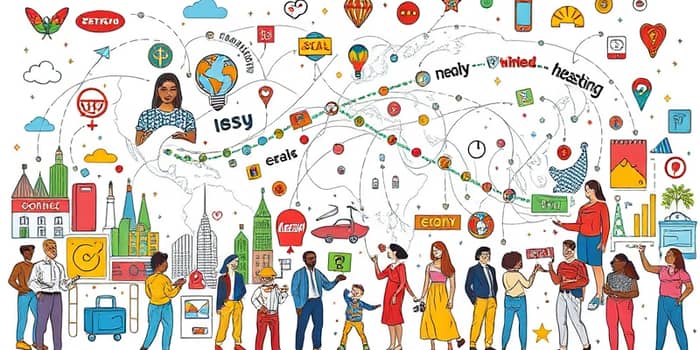
In an era where brands hold unrivaled power over consumer choice and corporate performance, understanding the trends shaping brand value is critical. This article unpacks the latest data, explores driving forces, and offers practical guidance for businesses and marketers aiming to strengthen their brand as a core asset.
At its core, financial value attributed to a brand quantifies the worth a company gains from consumer perception, market positioning, and projected earnings. It underpins strategic decisions from pricing to investment and often distinguishes market leaders from laggards.
Complementing this is brand equity, or the emotional attachment and trust consumers place in a brand. Equity fuels repeat purchases, supports price premiums, and builds a competitive moat that resists new entrants. As brands evolve into valued consumer assets, recognizing the interplay between these elements becomes imperative.
Recent data reveals a watershed moment: the combined value of the world’s Top 100 brands soared to a record $10.7 trillion in 2025, a 29% increase year-on-year. Technology giants led this surge, reflecting continued consumer reliance on digital ecosystems.
Below is an overview of the Top 10 brands by value, showcasing the scale of growth and sector dominance.
Apple’s leadership, regardless of valuation method, underscores its enduring brand strength and the premium consumers place on innovation and design excellence.
The consumer goods landscape presents a mixed picture. Apparel, food & beverages, and personal care registered flat or slight declines, yet individual brands like Uniqlo and Coca-Cola continued to outshine peers through strategic marketing and product innovation.
The alcohol sector saw an 11% dip, driven by health-focused younger consumers, while luxury brands declined by 2% as Chinese market volatility and evolving buyer priorities shifted spending toward experiential offerings.
Several forces propelled the most valuable brands upward in 2025. Recognizing and harnessing these can transform a brand from commodity to cherished asset.
Trust remains the cornerstone of brand relationships. Studies show 81% of consumers require trust before engaging, and 88% become loyal after three positive interactions.
Despite promising growth, brands face headwinds. Scandals and unfulfilled promises can erode trust overnight, while market fragmentation empowers niche players.
Yet opportunities abound. Brands that leverage real-time analytics and AI to anticipate needs can deliver hyper-relevant experiences. Treating brand equity as a long-term asset, much like investment portfolios, offers a framework for sustained value creation.
To translate insights into action, consider these practical steps:
The evolution from product-centric branding to experience-driven engagement marks a seismic shift. In the coming years, brands that integrate purpose, technology, and human connection will emerge as the most valuable consumer assets.
By aligning with consumer values, maintaining unwavering quality, and embracing innovation, businesses can not only navigate the turbulent landscape of 2025 but thrive as beloved pillars of the marketplace.
As you chart your brand’s journey, remember that value is not bestowed—it is earned through consistent actions, genuine narratives, and unwavering commitment to your community. The next chapter of brand value awaits those bold enough to reinvent what it means to be indispensable.
References













